DUCATI MULTISTRADA V4S: 10 OBSERVATIONS
Late last year, a posse of Transmoto lads threw a leg over Ducati’s new 2021 Multistrada V4S. And after a couple of months of testing this landmark machine in all sorts of road and off-road terrain, they did their level best to capture the essence of that experience in this video edit. It was no surprise that, with the MTS stepping up to a 19-inch front wheel and introducing a host of other design elements aimed at improving its off-road capabilities, the 2021 Multistrada V4 soon became the Italian brand’s biggest-selling model, both worldwide and in Australia.
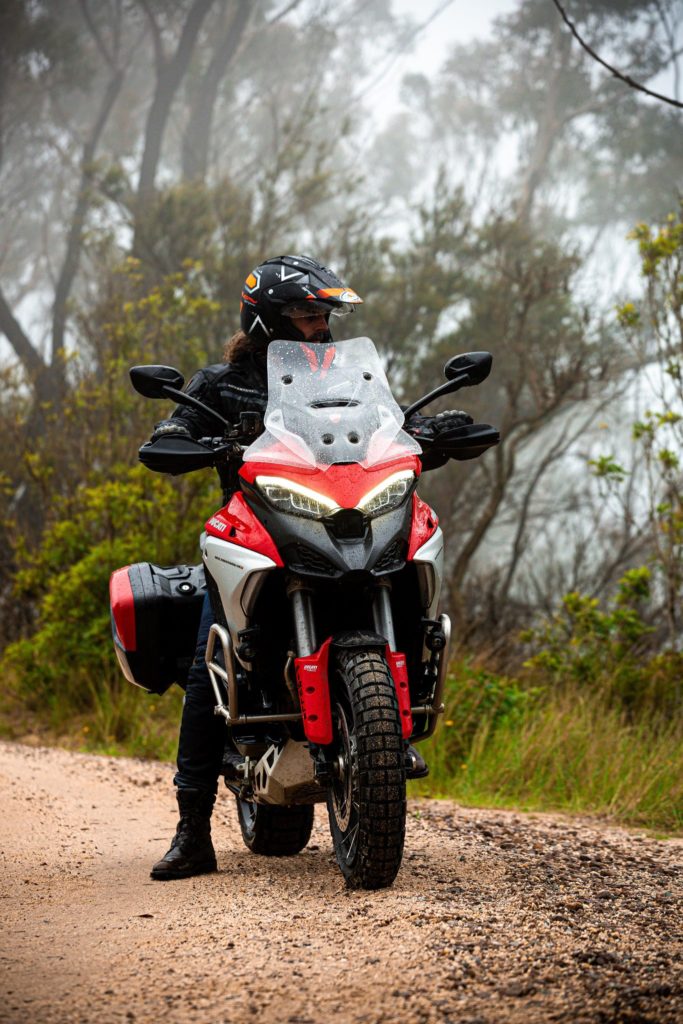
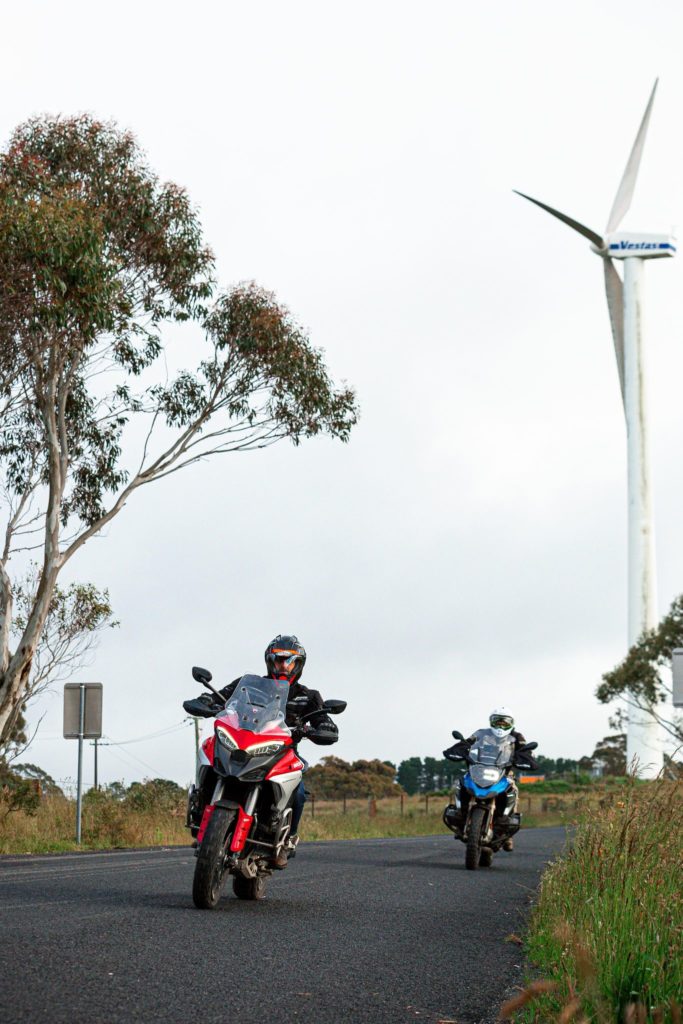
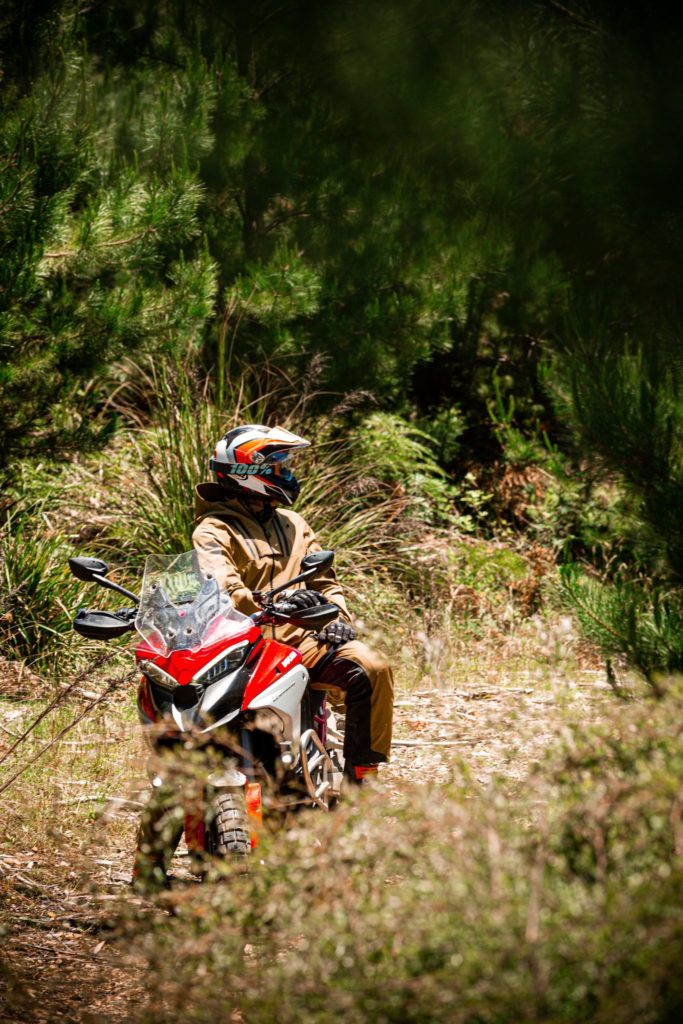
Well, as good as that nine-minute video was, it seems the boys thought too many precious nuggets of feedback ended up on the cutting-room floor. In fact, ever since that vid dropped, the guys who featured in it – Matt Holmes, in particular – have been bombarding me with additional feedback; more detailed insights into the bike’s personality and performance and its incredibly sophisticated electronic rider aids. And to be fair, it was all really insightful stuff.
Hence, this follow-up feature: A brain dump of Matt’s mental notes about the 2021 Multistrada V4S, wrapped up in 10 easy-to-digest observations. Take it away, Matt…
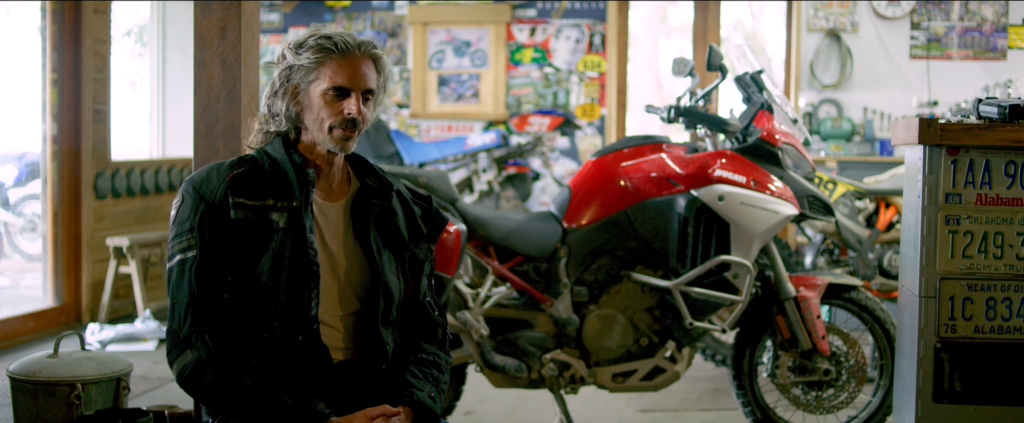
Here are my 10 take-away points from two months aboard the big red Italian; a machine that opened my eyes to the booming adventure bike market segment, and comes with more than a little touch of superbike ludicrousness…
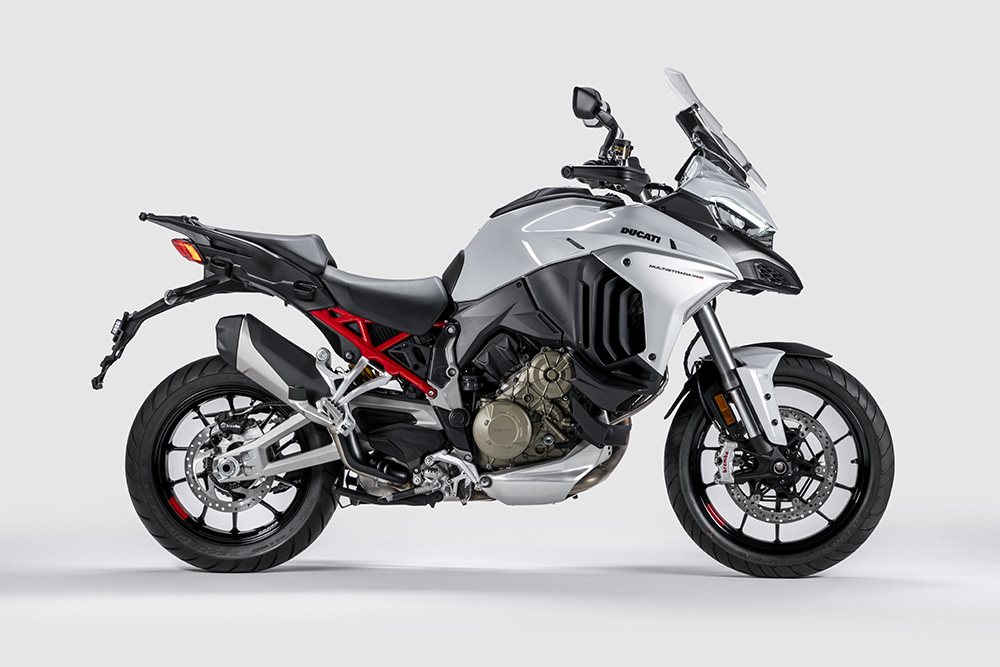
1. ENGINE
The big news for the V4S is, of course, the use of a non-desmo four-cylinder block and a monocoque main frame rather than a trellis design; two elements that have defined the Ducati experience for as long as I can remember.
The new V4 Granturismo engine is a far cry from earlier twins. It’s silky smooth at low rpm, with an absolute truckload of torque in the mid-range, and ridiculously powerful once you spin it over 7500rpm. The 168-horsepower peak comes at 10,500rpm with a signature Ducati roar. And it’s this versatility that is the heart and soul of this bike’s ‘many roads’ four-bikes-in-one concept.
Of course, to go up against the current crop of big ADVs, service intervals is often the first Q on the lips of any prospective buyer. Ducati listened, and they quote it at a class-leading 60,000km – a far cry from the belt, shim and valve adjustments of the older Desmo engines every 5000km (yep, until recently, I owned a 2004 Multistrada)!
While the V4 categorically outshines the outgoing twin in terms of power output, the overall engine is smaller in both size and displacement, which allowed the designers to lower the seat height and slim down its width – all in order to add to the bike’s versatility and, in particular, its off-road chops.
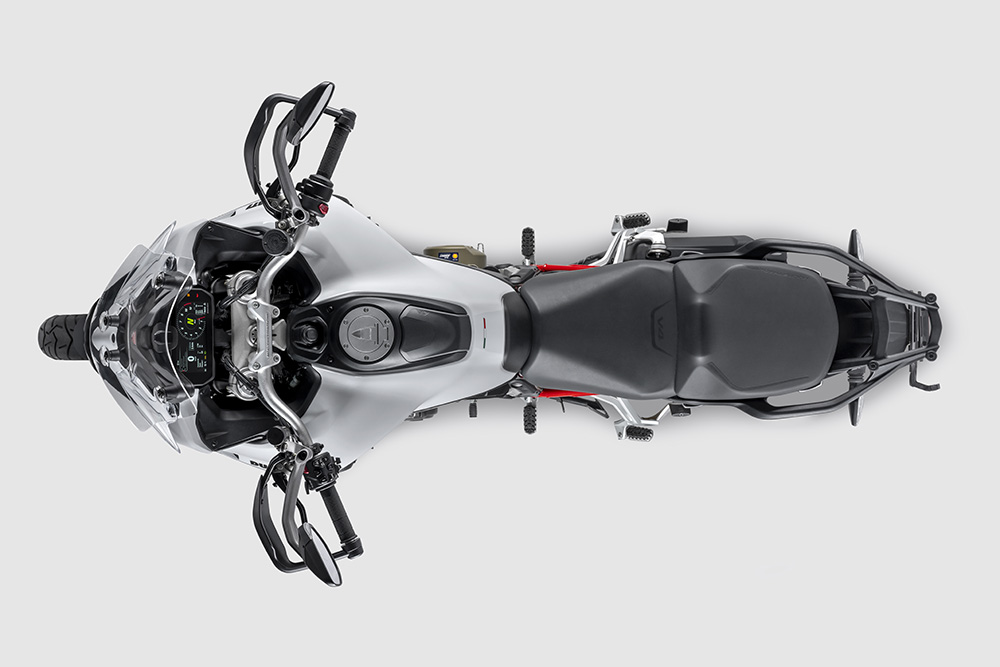
2. COCKPIT
Talking seats, it’s here that Ducati really state their intentions. The Multi is a bike quite capable of crossing our big ol’ continent in comfort without a huge sheepskin seat cover strapped on top. Both height-adjustable and heated, the seat is still more than comfortable at the end of a long day. Should you have a pillion, their butt gets the heated treatment as well, and first impressions from my better half have noted that it represents a massive upgrade in comfort over the earlier Multis.
At first glance, the bars look incredibly wide and swept back, but they provide an amazing balance between leverage and comfort, both sitting and standing. And those big mirrors have been designed to be useful when sitting on the bike and out of your way when standing on it.
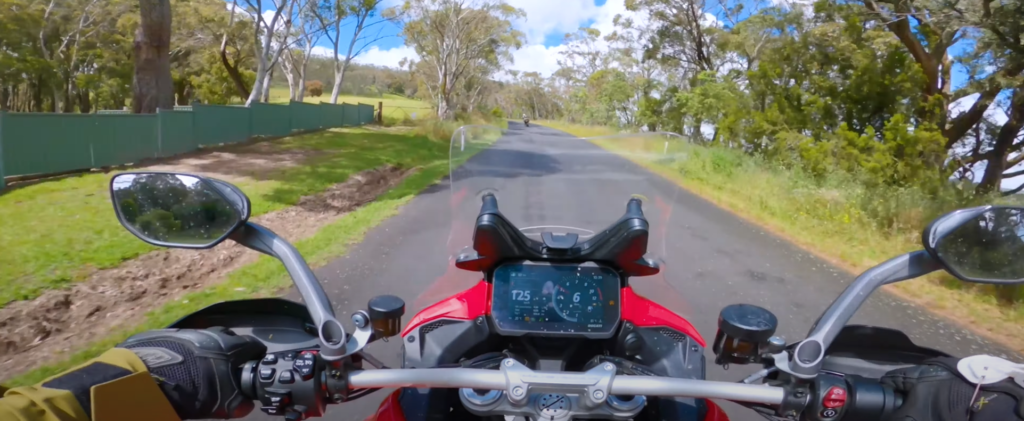
Dash-wise, Ducati has done their homework. It’s big, bright TFT is quite amazing in its ability to showcase almost everything you need to know legibly (that is, at speed). It also has a simple angle adjust underneath to allow you to set it for better viewing, be it standing or sitting, plus avoid any glare. Ducati has worked hard on the UI and UX, all toggled by a joystick and number of buttons, which your left thumb and forefinger will eventually navigate through without thought. Feel is great and navigation is intuitive. That said, watching Ducati’s how-to vids is a must. And a few long highway stints are definitely in order to get it all in place in your head.
Outside of riding and suspension modes (which I will get to), toggling through the options finds GPS, phone, and music functions, all of which require pairing your phone with the bike and plugging it in via the sweet little waterproof stash spot on top of the fuel tank. Once you’ve linked to the bike via Ducati’s own app and free-to-download Sygic GPS Nav app, that big TFT dash really comes into play. I found Navigation to be fantastic via Sygic, although not Google. It’s very intuitive, but planning your journey on your phone before you take off makes it even easier. Phone integration with bluetooth headphones is spot-on, displaying caller ID and the like on screen, but music was a hit-and-miss affair with iTunes (although we’ve been assured that Ducati’s latest software update has this taken care of, along with adding a whole lot more functionality).

3. BRAKING
The Brembo Stylema brakes are top-shelf kit. It doesn’t take much to get the Multi to slow or stop when needed – think superbike-like stopping power with one finger, but not at the expense of feel or overly aggressive shudders. While initial dirt rides had us wanting both front and rear ABS off, the front system, when in Enduro mode, is simply brilliant. It’s almost unnoticeable in action, just washing off speed fast, even when used heavy-handedly on dirt or sand. We’re not sure what witchcraft Bosch have invested in, but it rocks. Take the Multi into a tarmac corner way too hot and you’ll feel the IMU (inertial measurement unit) in action through the rear brake pedal or front lever, pulsing ever so slightly to let you know it’s doing its best to keep you on the bike, but there’s no shudder in the brake or at the wheel, or sitting you up mid-corner whatsoever.
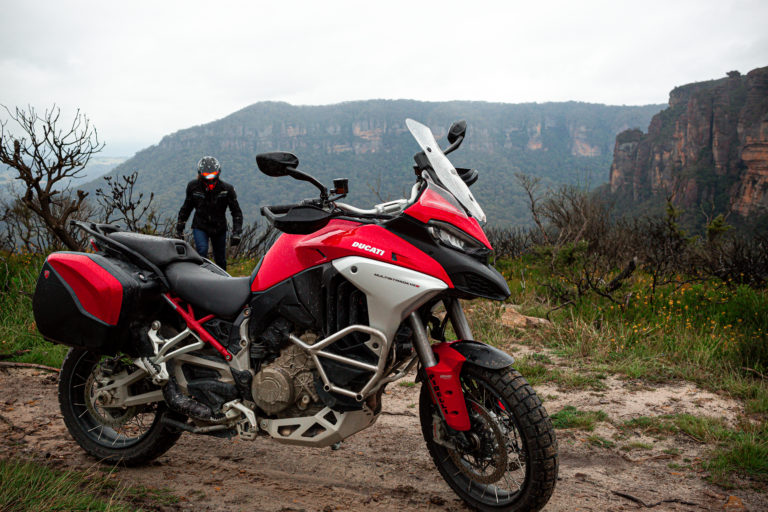
4. PROTECTION
Step onto the Multi and it’s immediately apparent there’s a lot of bike in front of you or, more to the point, around you when sitting. That said, once standing, it’s surprisingly easy to move around on. Of course, that big front-end is there to keep you protected from the elements and it does an admirable job of keeping your lower half out of the wind and rain.
Even more than the fairing, the screen warrants a mention. While its simplicity is far removed from the tech below the surface, the windscreen is a functional work of brilliance. Moved up and down with a gentle push or pull, its protection is amazing, offering a quiet ride at speed in almost any position and one that makes for a much happier neck at the end of the day. No knobs or funky levers here. Ducati does offer a smaller enduro screen, which will come as good news to those looking to go off-road more than on, as the stock screen (even in its down position) did clip our full face a few times in off-road terrain, but the protection provided on the long hauls is something I doubt I could never do without again.
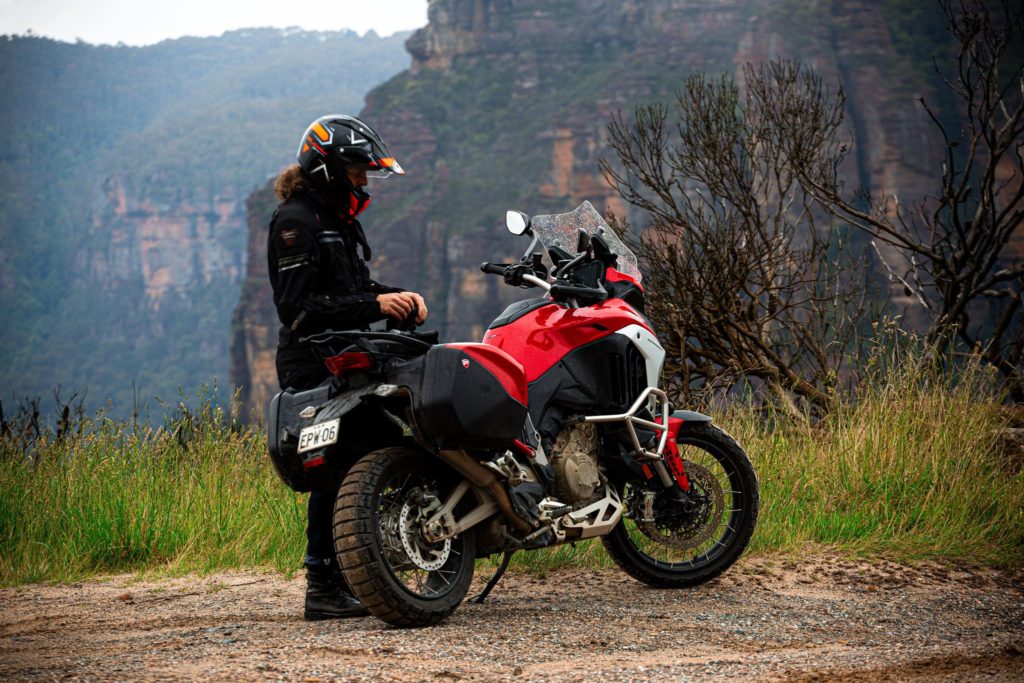
5. TECH
Ducati has nudged the bar so damn high in terms of technology, their development on this bike outstrips virtually every bike they built before it. Ducati’s ANZ Service Manager, Luke van den Borst, let me know its development was a figure in the multi millions, which speaks loudly of their intentions. The Bosch-engineered six-axis inertial measurement unit (IMU) informs every system on the bike. Think cornering-ABS, traction control, and Quickshifter, as well as hill-hold control, cornering headlights, self-cancelling turn signals, plus the Skyhook semi-active suspension with a new auto-levelling function. That’s a lot of tech for the dollars.
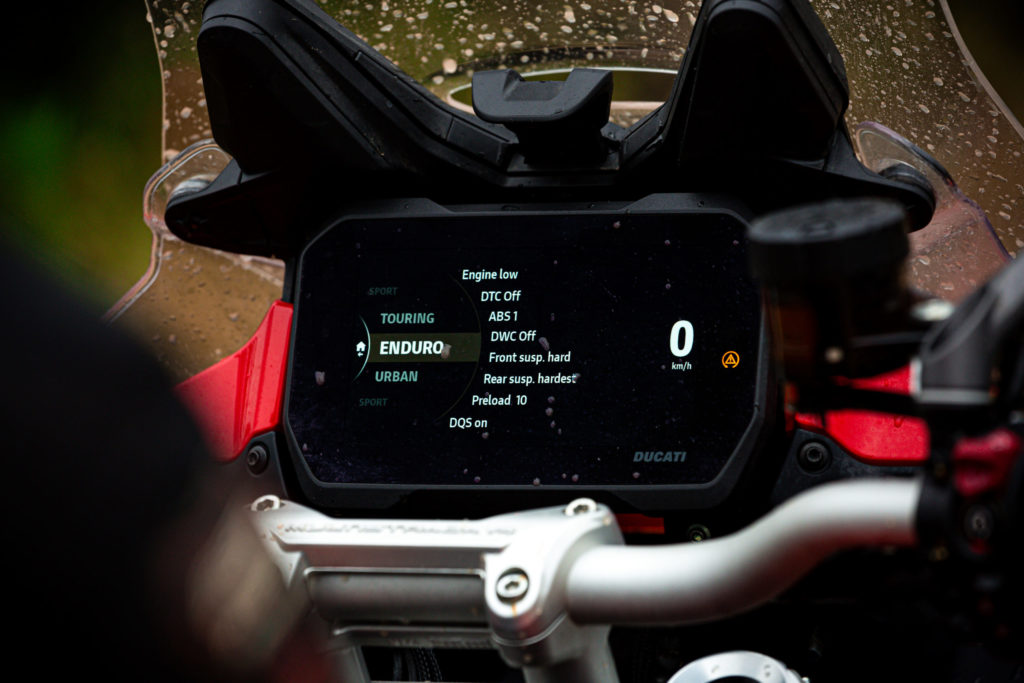
The IMU is also the basis for the bike’s four riding modes: Sport, Touring, Urban and Enduro, and these radically change the bike’s character with a simple thumb jam of the toggle switch and a quick rolling off of the throttle if on the move. More about riding modes in Observation 6.
If you’re not content with simply riding with Ducati’s intensely researched settings, well you’re free to go nuts. Engine power, traction control, ABS of both front and rear brakes, hill-hold control, wheelie control, semi-active suspension damping and preload settings can all be customised by diving into the display’s menu and adjusting to your heart’s content. And unlike many ADV models out there, turning the bike off doesn’t reset your hard-earned custom set-up. Genius!
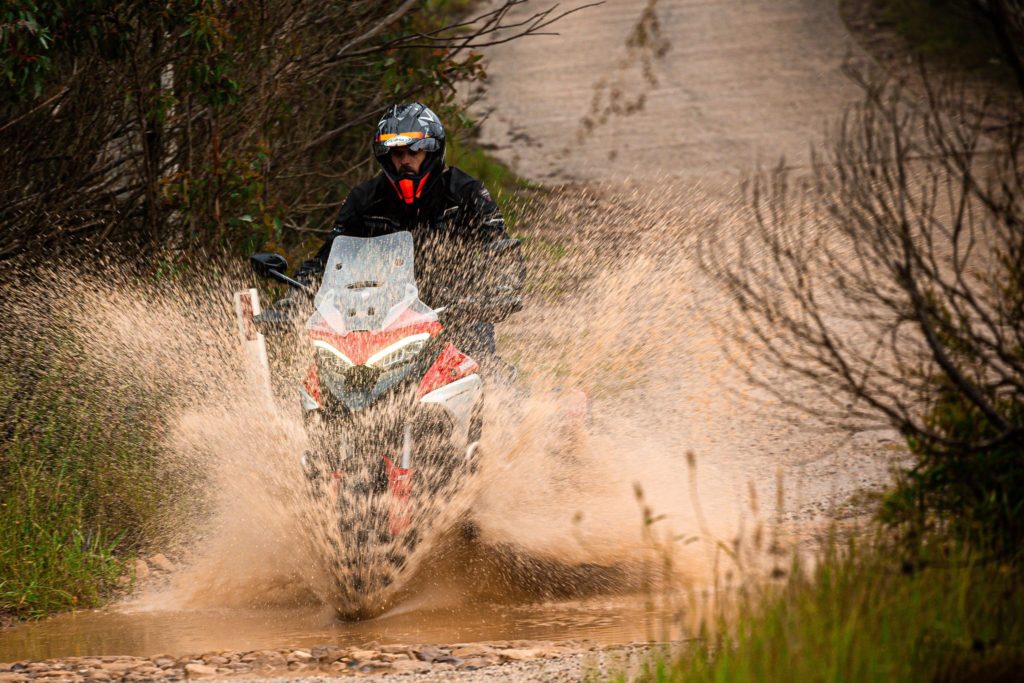
6. RIDING MODES
Four bikes in one, thanks to toggling through four riding modes: Sport, Touring, Urban and Enduro. Let’s start with the all-singing, all-dancing Sport mode. This has the semi-active Marzocchi Skyhook suspension dialled nice and tight alongside an exceptionally crisp throttle response, engine mapping and all of the many rider aids active (including wheelie control and traction control, amongst others), allowing you to tap into 168 horses of Ducati racing heritage. Once the needle moves above 7500rpm, it’s raw nature almost comes as a shock after the smooth, quiet delivery from low revs. Just like the powerband on a RM80 two-stroke in the ’80s, the Multi hitting peak HP never gets old. Turn off wheelie control and the front wheel will lift through the gears without hesitation.
Touring and Urban modes relax the Multi somewhat, each softening the chassis and throttle response to suit pothole-riddled back roads, long-haul highways, all the way through to city streets and stop-start traffic.
Enduro mode dials the V4 down to a ‘mellow’ 115 horsepower, meaning you can ease your way along trails barely above idle without much clutch work in first or second gears, or twist the throttle open and use on-demand torque to steer with the rear and find traction where you can. Traction control can be backed down or turned completely off in Enduro mode, and you’ll want to do that, as there’s nothing worse than the IMU stepping in and powering off briefly just as you find yourself in a sandy river crossing where you need every little bit of grip and/or wheelspin there is.
Above all, what I found genius was the way the IMU interacts with the Quickshifter in each mode – blipping the throttle off for that moment you click up or down, but it’s barely noticeable in all modes, whether standing or seated, although there’s a slightly different feel though your toes in each mode as it adapts to your changing style. Yes, it’s learning from you.
Before we leave the modes, suspension has to rate a mention. Preload has four pre-set settings, adjusted by a dedicated suspension button on the left thumb cluster, plus it runs an auto-levelling function that calculates rider plus any luggage weight. It’s like having a suspension technician on the bike at all times, taking a lot of guesswork out of getting a baseline setting sorted that suits you for the terrain you plan on riding.
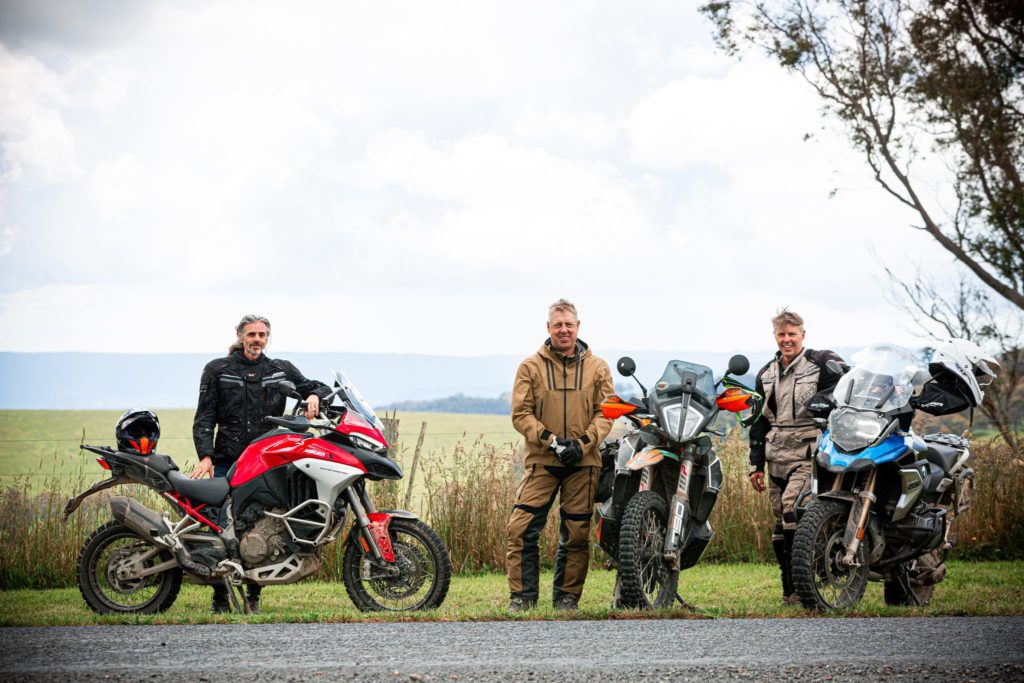
7. ADAPTIVE CRUISE CONTROL & BLIND SPOT DETECTION
In a first for production motorcycles, Ducati has added Adaptive Cruise Control and Blind Spot Detection to the new Multi. It only took one ride in Friday night peak-hour Sydney traffic to work out that this is a lifesaver and I dare say a feature we’ll see on a lot of bikes in the years to come.
Once ACC is engaged, it’s adjustable for three distance levels; the bike maintaining its chosen distance from other vehicles both in front and behind, accelerating and decelerating as needed based on information gathered from the bike’s front and rear radar sensors. Come up on a car too quickly, and the Multi will engage engine braking and – only if needs be – the brakes to help avoid a collision. Rest assured, it won’t pull you up to a complete stop, although the system will drop you from 100 to 25km/h in a pinch. It’s a bit disarming at first and it took some time to trust the system, but Ducati has done an incredible job with this technology. I’ve had cars change multiple lanes in front of me and the bikes simply slows as needed. Then once they move out of your way, it’s back to cruising speed in mere moments. While at first surprised I could shift gears without turning the ACC off (as touching a brake or rolling the throttle forward a smidge will do), it’s genius to be able to rev-match to the situation should you need to get out quick.
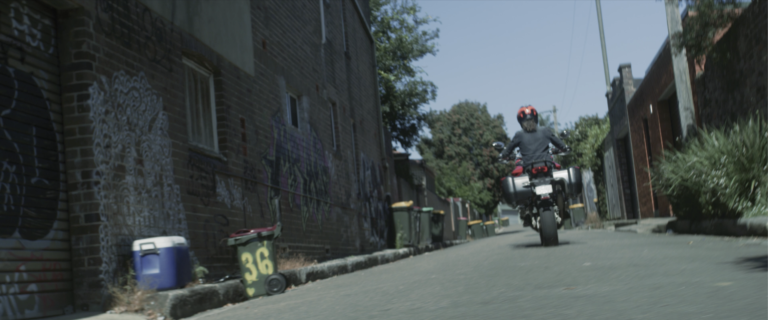
Maybe the biggest benefit of ACC was using it to get to destinations fresh and not exhausted from city and highway chaos. Its ability to take some of the load off on the way home – when you’ve got sweet FA left in your ‘tank’ – is brilliant too.
Working alongside ACC is Blind Spot Detection, which illuminates LEDs on the rear-view mirrors warning you of incoming traffic in your rear quarters. It’s nothing new in cars, but if something was ever going to live up to the name of being a game changer in the moto world, this could be it. Again, it’s sensitivity is adjustable (distance-wise) and you can dull the brightness on the outer mirror shroud. It definitely keeps you sharp, checking mirrors and your blind spot before overtaking on the highway and in city traffic. And while it’s no substitute for a glance over the shoulder, more than anything I found drivers thinking I was indicating to change lanes and gave me space – something that’s unheard of in Sydney traffic! Should you wonder what use this would be in the dirt … well, don’t sweat – it’s turned off in Enduro mode.

8. ON THE ROAD
If you want a sport-oriented ADV, the Multistrada might just be everything you ever dreamed of. It’s a bike made to burn up the kilometres in absolute comfort, yet do it in the fashion that has made Ducati’s track- and road-going bikes legendary. It’s an exciting machine to tip into corners and ease the throttle on out of them, unloading all those Italian ponies as you quick-shift through the gears effortlessly, front wheel skimming the ground into sixth. Keep the revs up and the bike flows through the corners with poise and purpose, the 19-inch front wheel not taking too much away from its road heritage. Those huge bars counteract the bigger wheel and make it a weapon in the twisties, more than capable of leaving sport bike riders in your wake. Don’t just take my word for it. Our own MotoGP shredder, Jack Miller, is a huge fan of the Multi, and one quick look at the beginning of the recent Ducati Owners Club celebrations in Italy saw him leading hundreds of Ducatisti into Mugello with a stand-up burnout.
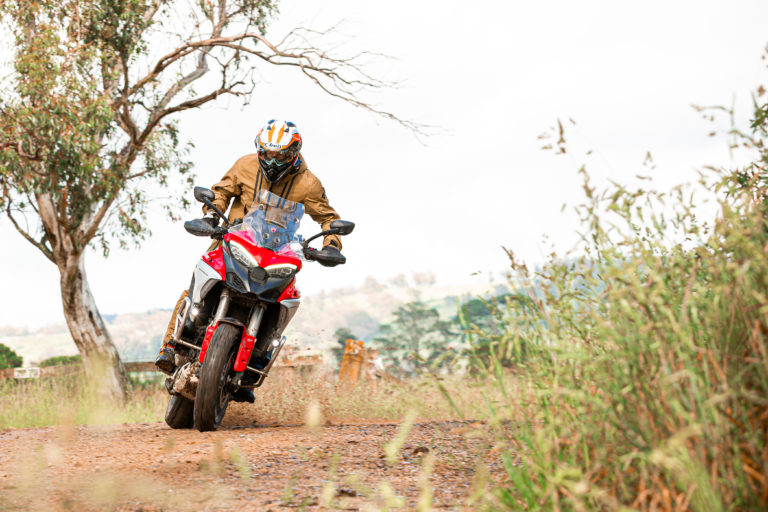
9. IN THE DIRT
So, the big question is, would you aim a red $40K+ Italian thoroughbred into the dirt? Seeing as our test bike was fitted with Pirelli Scorpion Rally tyres and tubeless wire-spoke wheels out of the factory, we did.
We used the Multi’s seat-height adjuster to place the saddle in its low position, switched it into Enduro mode and set the suspension damping to its hardest settings. Once off the smooth fire roads, the factory settings need some adjusting. Enduro suspension settings are far from firm, and way too soft once the going got rougher. With the bike weighing in at 250kg wet, it’s a big call for any rear shock to handle. The 180mm of rear-end travel takes on reasonably smooth off-road hits with ease. Fully loaded, square edged hits and landing from drops, however, prompts it to blow through the rear travel very quickly, even under my 70kg of pure bulk. That said and done, the front-end feels incredibly composed and ready for anything when in the hardest setting.
Surprisingly, the factory traction control setting in Enduro mode was also out of sorts, overly intrusive in loose dirt and backing off intermittently. One river crossing in particular had us bemoaning Bologna’s finest while wondering how high the air filter was as we sank deeper into the sandy bank. After that, the TC was turned off altogether for the bulk of our off-roading.
For serious off-road use, the minimal rear brake pedal definitely needs to be bigger. An aftermarket add-on plate will make this much more usable when standing, as even adjusted all the way up it’s easy to miss in off-road boots.
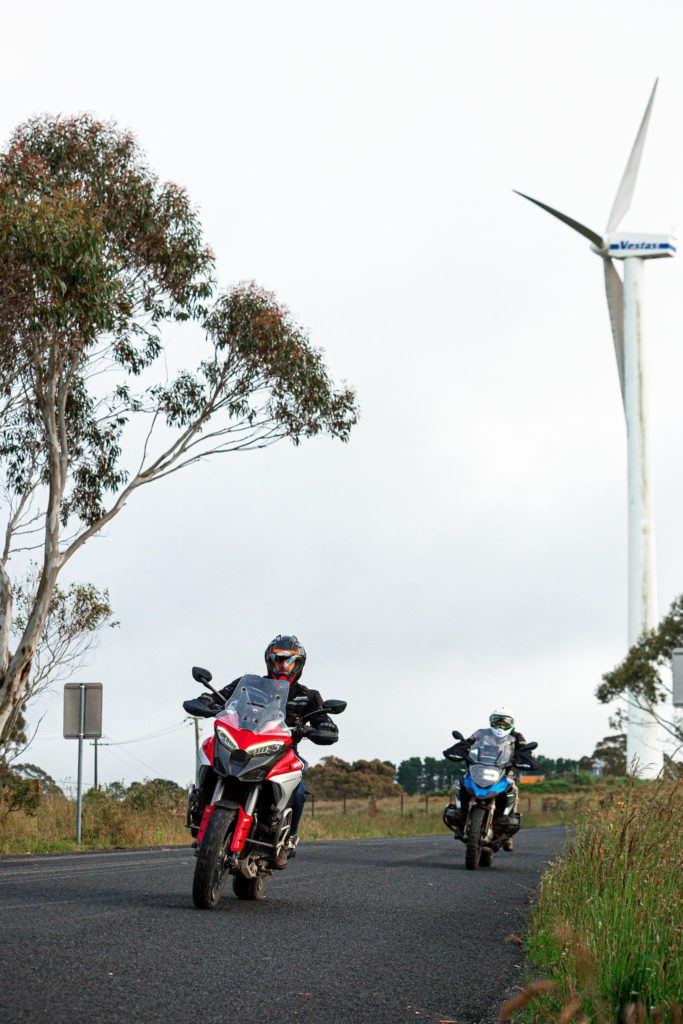
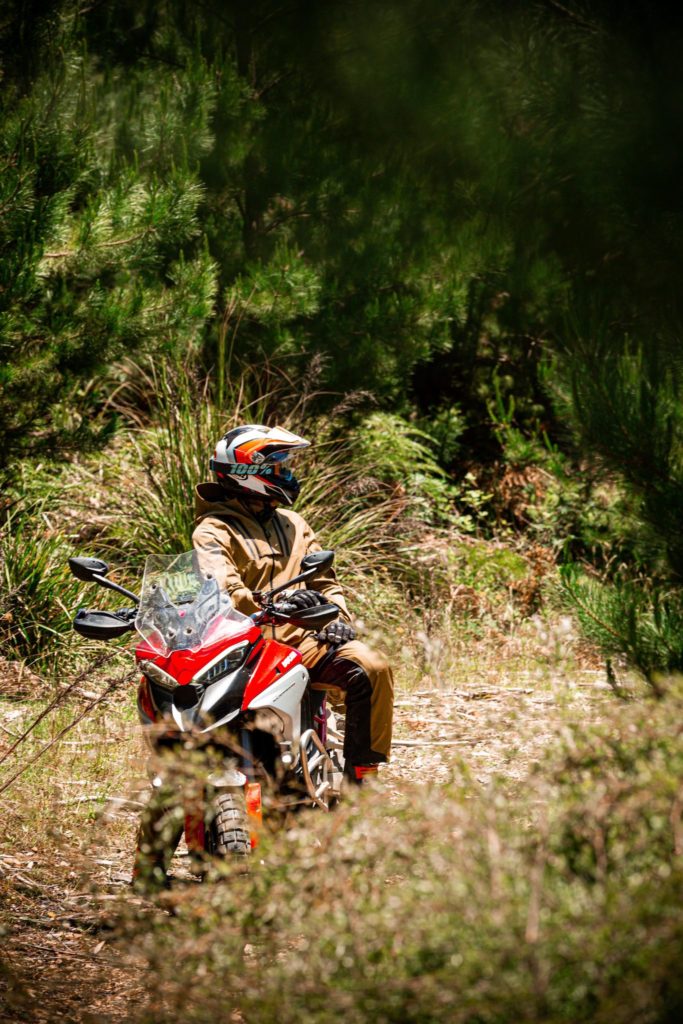
10. A FINAL TAKE
A daily ride that can get you to work, shred mountain roads with your sport bike brethren, cross Australia in a few days, or get it axle-deep in mud and water on the loosest forest trail to watch your crew ride a Transmoto Enduro, the Multi delivers on all fronts. And it does so with style, comfort and a huge amount of useable power on tap. Nimble, fast AF and there to keep you safe, it’s a lot of bike and an absolute pleasure to ride day in, day out. Will it knock the current rulers off the top steps in the big ADV class? Only time will tell, but if you choose to jump on board a Multi V4, you’ll be smiling every time you twist the throttle.
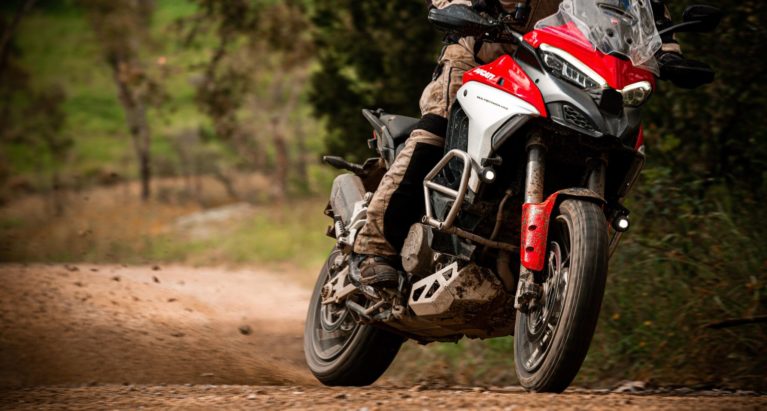
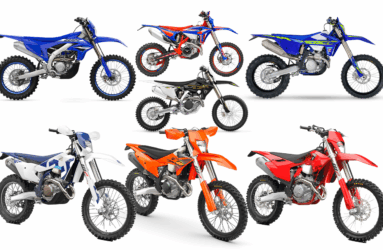

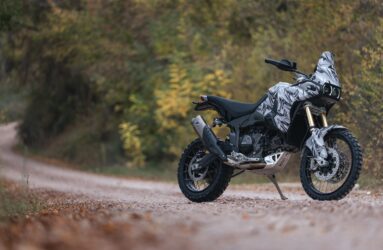
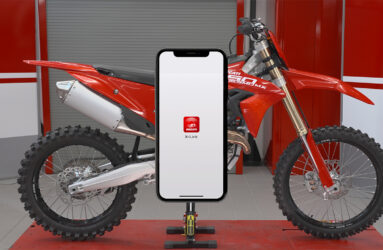


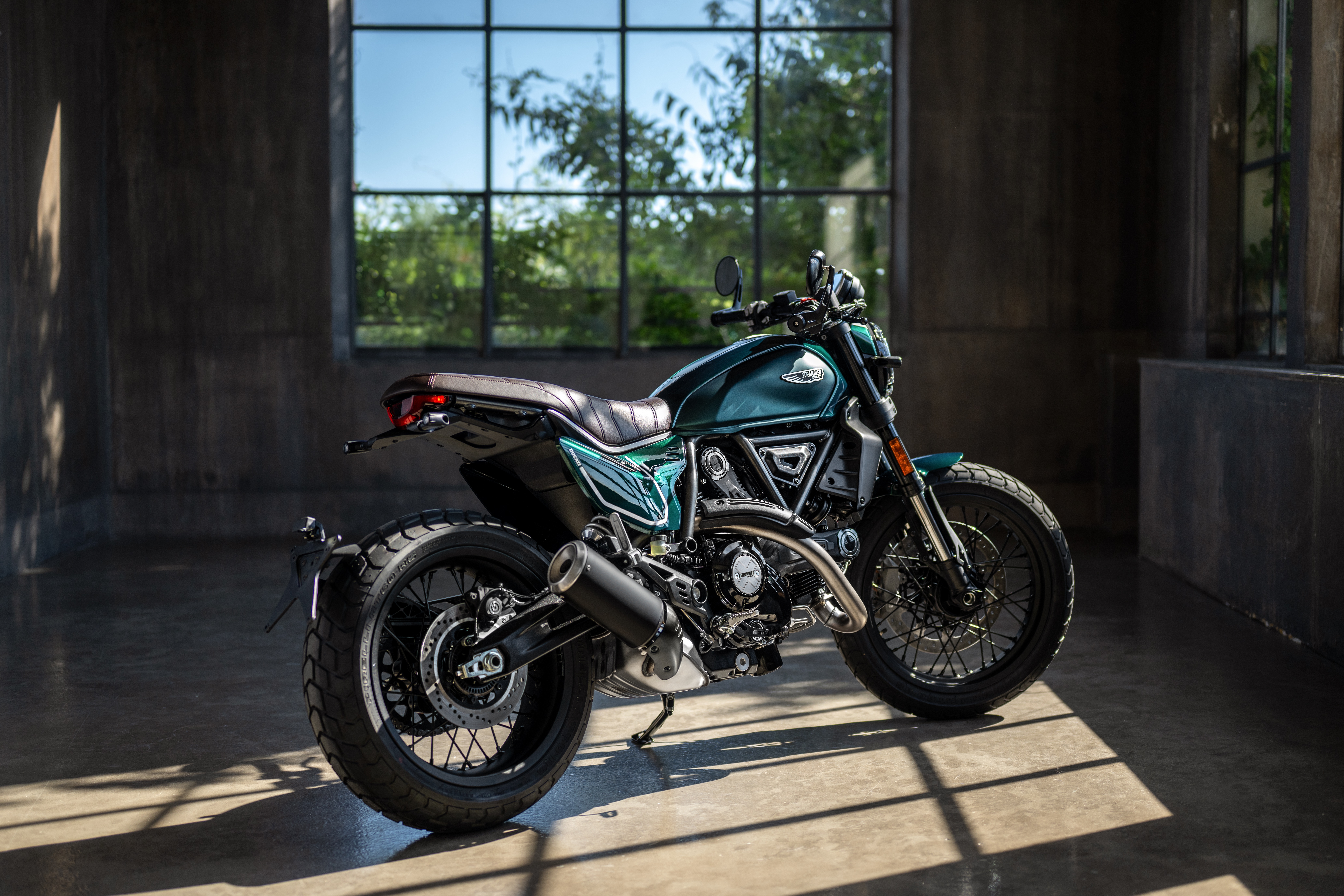
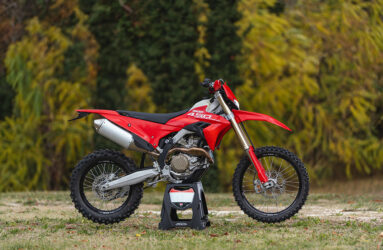
Be the first to comment...